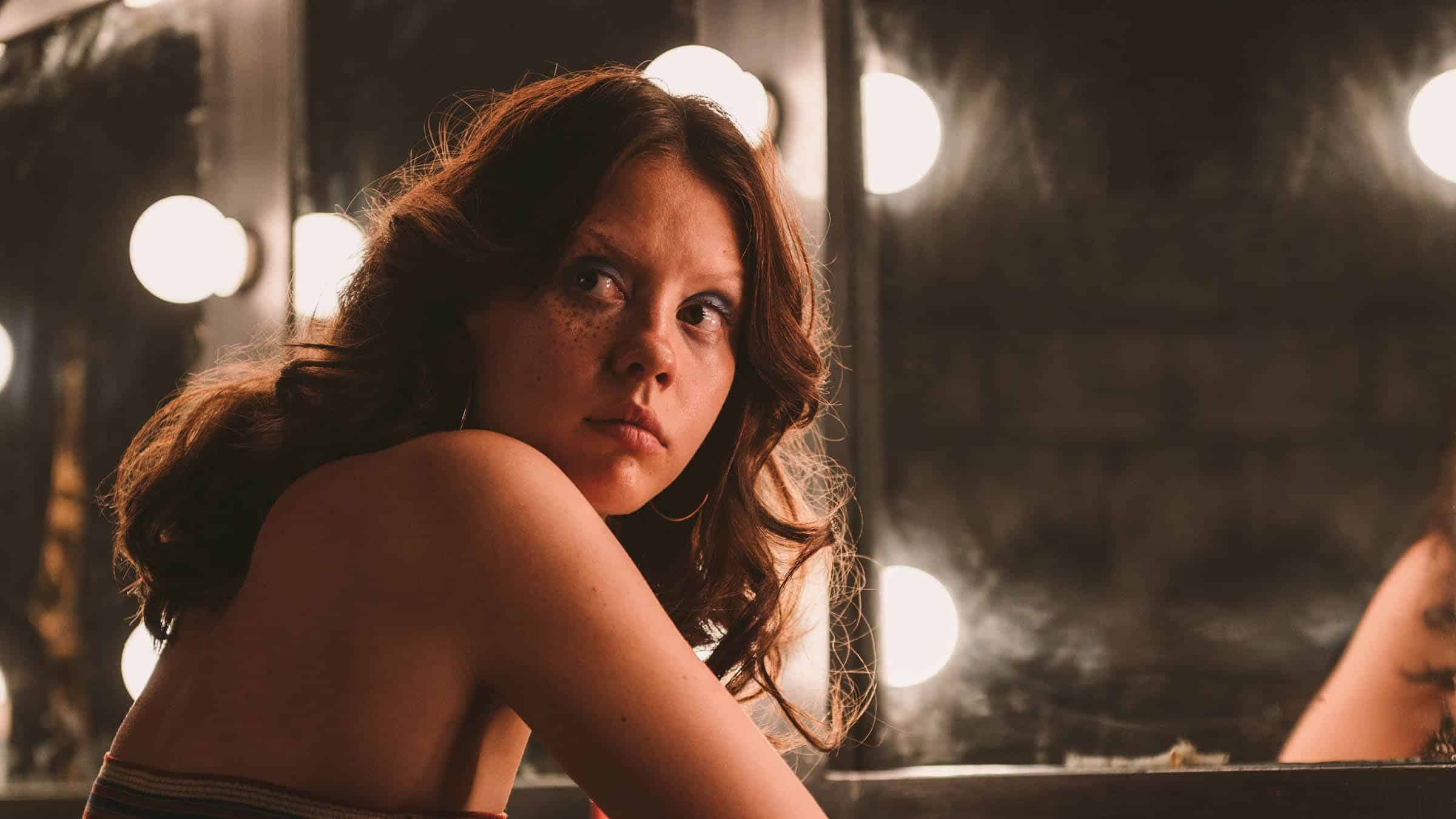‘Hagsploitation’: Problematic or high brow camp?

‘Hagsploitation’ is ridden with stereotypes. A term coined to turn an older woman into a monstrous, murder-hungry hag is in essence misogynistic, ageist and said to be devoid of complex cinema. But with A24’s X and its prequel Pearl showing a psychotic old woman who is aware of her impending demise in sexuality, HUNGER asks whether the term is still a “film bros” stereotype, or self-aware camp meets highbrow cinema?
Directed by Ti West, X was released this year and became a box office success. Mia Goth was cast as the lead role, who is part of a sexy southern 70s porn star group going to shoot a film about a ‘Farmer’s Daughter’. The body-loving, sexually liberated group meet a god-fearing elderly couple who own the secluded house near their set.
However, when the old lady (also played by Mia Goth in special FX) is revealed to be desperately pining for her youth and a slither of male attention, she turns into a killer who hacks up men in the full moon and stabs slimy boyfriends in the eyes with nails. She crawls into bed with the young girl, depicted to be the youthful version of herself, completely stark naked. Is director West trying to tell us something there? There is, apparently, nothing scarier than an old naked woman.
The film awakens a multitude of natural and unnatural desires, but also teeters on the pictorial high brow element that harnesses traditional horror traits. It utilises the “film bros” trifecta through the themes of sex, violence and religion, and proves, like many successful films before it, that sex and violence don’t disregard merit.
But are we really going to let the whole ‘older woman as dangerous killer because she can’t be sexy anymore’ thing go? It falls under the film sub genre ‘Hagsploitation’, which is (as the name suggests) the exploitation of hags for cinematic purpose, but may also be called ‘Psycho-Biddy Horror’, ‘Grande Dame Guignol’ and ‘Batty Spinster’. The genre is charmingly observed as a narration on female ageing, and was said to provide an opportunity for old Hollywood actresses that had surpassed the age of 45 to continue acting. Along with the likes of period drama Dames and middle-age divorces for women of a ‘certain’ age, these stereotypical roles evidently won’t be going away anytime soon. Well, what’s more scary than an angry post-menopausul woman? Clearly for some male directors, no killer clown or psychotic serial murderer could begin to compare.
The role is now rigidly set due to its historical exposure in horror and psychological thrillers. Cinema has previously seen the likes of classics like The Nanny (1965), What’s the Matter with Helen? (1971), Whoever Slew Auntie Roo (1972) and Mommie Dearest (1981) depict ‘Hagsploitation’ at its finest . A24 have also done the highly-appraised Hereditary (2018) with a demon-worshipping older lady in it. The film is considered one of the scariest movies of all time. But it all truly started with What Ever Happened To Baby Jane? (1962), which was directed by Robert Aldrich in a Hitchcockian-style psychological horror that featured Bette Davies and Joan Crawford as, you guessed it, “haggard” old women. Their rivalry escalates into abuse, in part due to mental illness. It rates critically high, with Mike McCahill of The Guardian describing the film as “fascinatingly warped: an extended study in decaying flesh”.
However, the critic goes on to acknowledge the director’s pioneering take, and how “Aldrich sensed the terror age might wreak on those working within an industry beginning to deify youth, while awarding two seasoned troupers another chance to devour the scenery – and each other.”
It’s not that film should not explore ageing, but it just so happens that the rituals surrounding many of the older women depicted in horror films are, quite frankly, ageist and misogynistic. Repeated tropes throughout these sub-genre films are the likes of incessant makeup applying, mental illness that transcends into ‘lunacy’ and general grotesque spectres. They become figures of disgust, not for their murderous tendencies, but for their irksome ageing process. The conceived insanity is unnerving for audiences, but also invokes a sense of resentment towards what is being depicted as society’s outcasts.
However, the portrayal could also be seen as intelligent in the ironic explorations of older women. Despite Mia Goth being 29 years old as she plays the old woman, X moves forward in successfully scrutinising the sub genre with a frank take on ‘Hagsploitation’.
The depiction feels self-aware and informed. Ti West’s approach to the storyline doesn’t shy away from revealing that these feelings towards old women in horror films are clearly underpinned by a fear of losing sexuality with age. Instead, it embraces and exaggerates this, and can be seen as almost a camp caricature of the horror stereotype. It successfully rearranges the traits of old Hollywood ‘Hagsploitation’ and injects a modern view in regard to character portrayal.
So, it’s really each to their own when it comes to the interpretation of the older woman in film, but we settle on the depiction of ‘Hagsploitation’ in X, and trust that the self-aware directors out there will parody the trope as well as Ti West did moving forwards.

